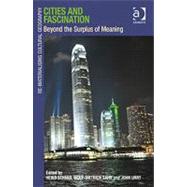- ISBN: 9781409418535 | 1409418537
- Cover: Hardcover
- Copyright: 3/28/2011
In the course of economic and cultural globalisation, most large cities and metropolises have undergone far-reaching transformations induced by an increasing commercialisation of urban space and, in consequence, intense processes of theming - often but not always focussed on entertainment. Thus, urban space is increasingly conceived as an emotional atmosphere where conventional and functional urban configurations are gradually supplemented and even substituted by semiotic and psychological processes. In these circumstances, urban governance also has to change and to consider new aspects of power relations where rational competences and responsibilities are increasingly transferred to socio-psychological and cognitive process, accompanied by the transfer from public to private and semi-state actors. Thus, the urban environment has to be analyzed through a combined rational and emotional research approach. While several classic authors, including Thorstein Veblen, Georg Simmels, Guy Debord, Gottdiener and Lagopoulos, Lash & Urry, and Georg Franck's have already pointed to this phenomenon, rarely have the linkages between economic, social and psychological factors been discussed in a contextual way. Bringing together leading urban scholars including Michael Sorkin, Neil Smith, Jacques Levy and Michael Dear, this book does so, focussing in particular on the growth of private urbanity that has led to a 'spectacularization' of the city. It takes the view that fascination is probably the most extreme component of attention, roused by attractions and stage-managed events which have a magnetising and captivating effect on the consumer, so that the economic and social decisions are no longer rational. The book argues that "fascination" not only describes an externally structured compulsion and binding (enchantment), but also the internal desire for seduction and happiness. In this regard, it plays a key role for the commercialisation of theming giving it a pivotal role for the economic utilisation of urban landscapes. As such, "fascination" is not a one-dimensional phenomenon, but addresses to a complex set of characteristics. The volume is divided into four main sections, each of which examines a pivotal dimension: (1) aesthetics, (2) emotions, (3) lived experiences, and (4) power structures & governance. Despite coming from a wide range of perspectives (aesthetic, psychological, political and sociological), all the contributors are very concerned with the question of power. They highlight how fascination, even if it includes fear, has become a powerful means of governance in our daily life experiences.






